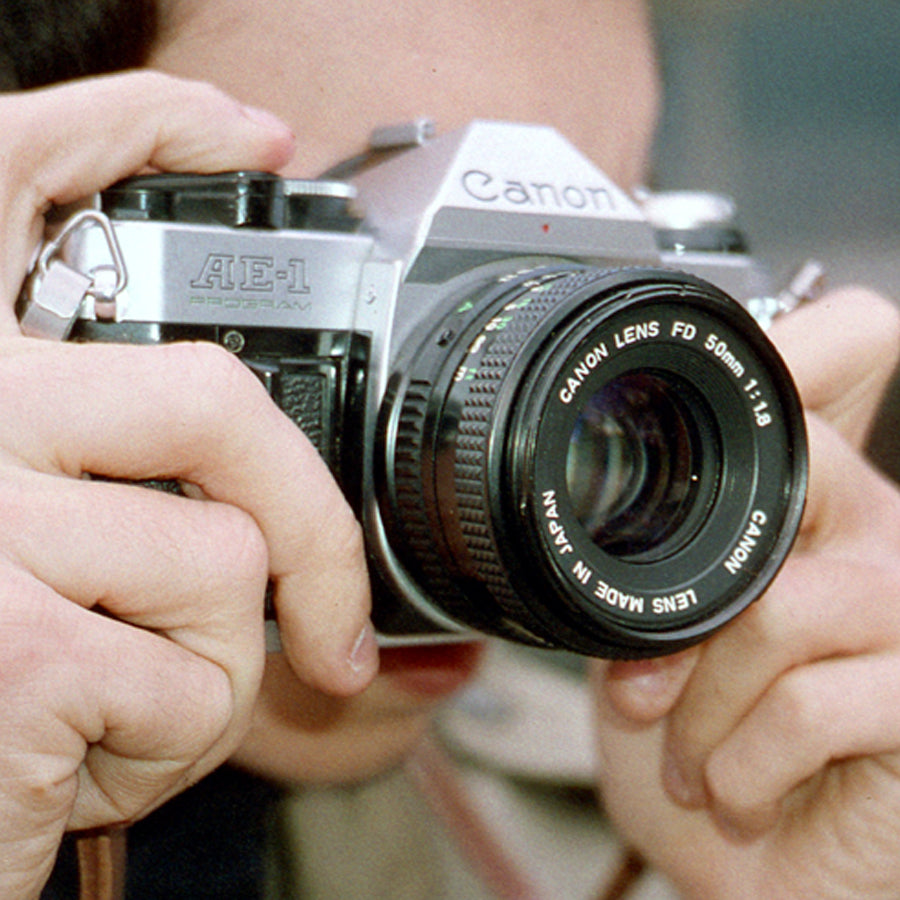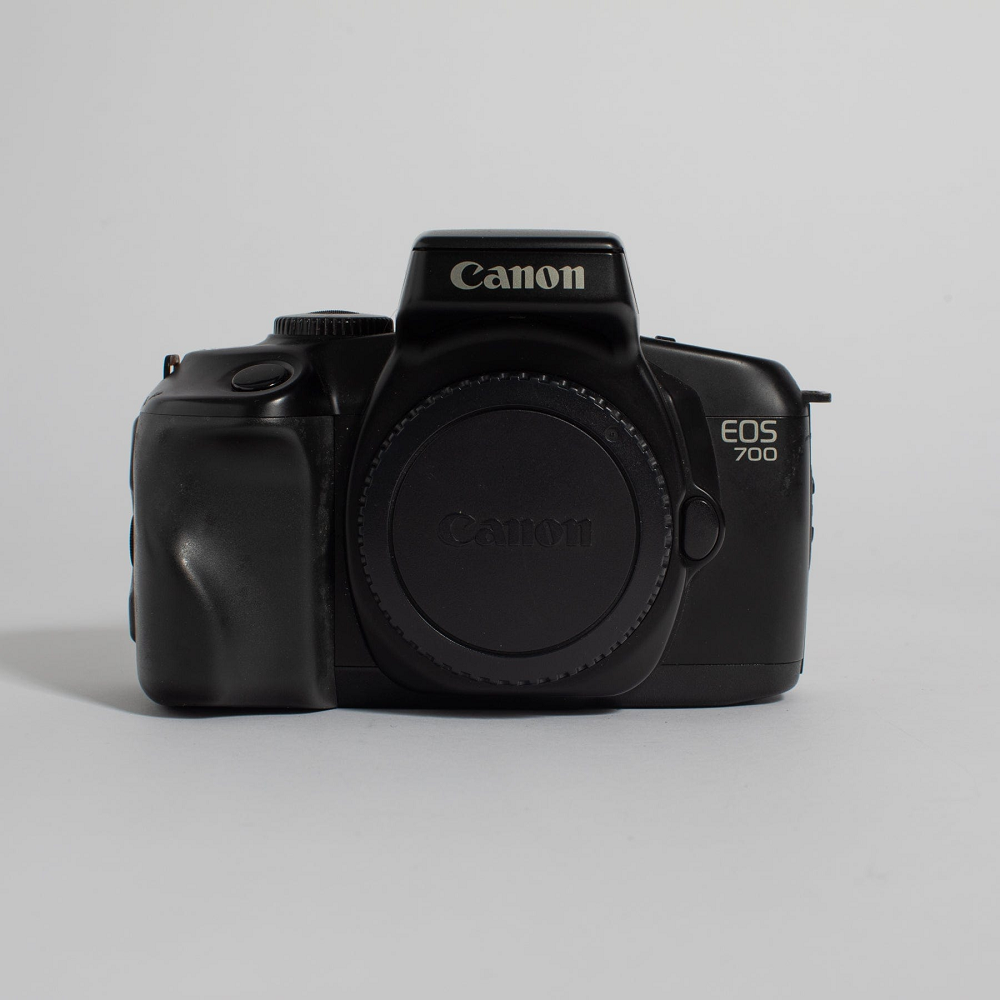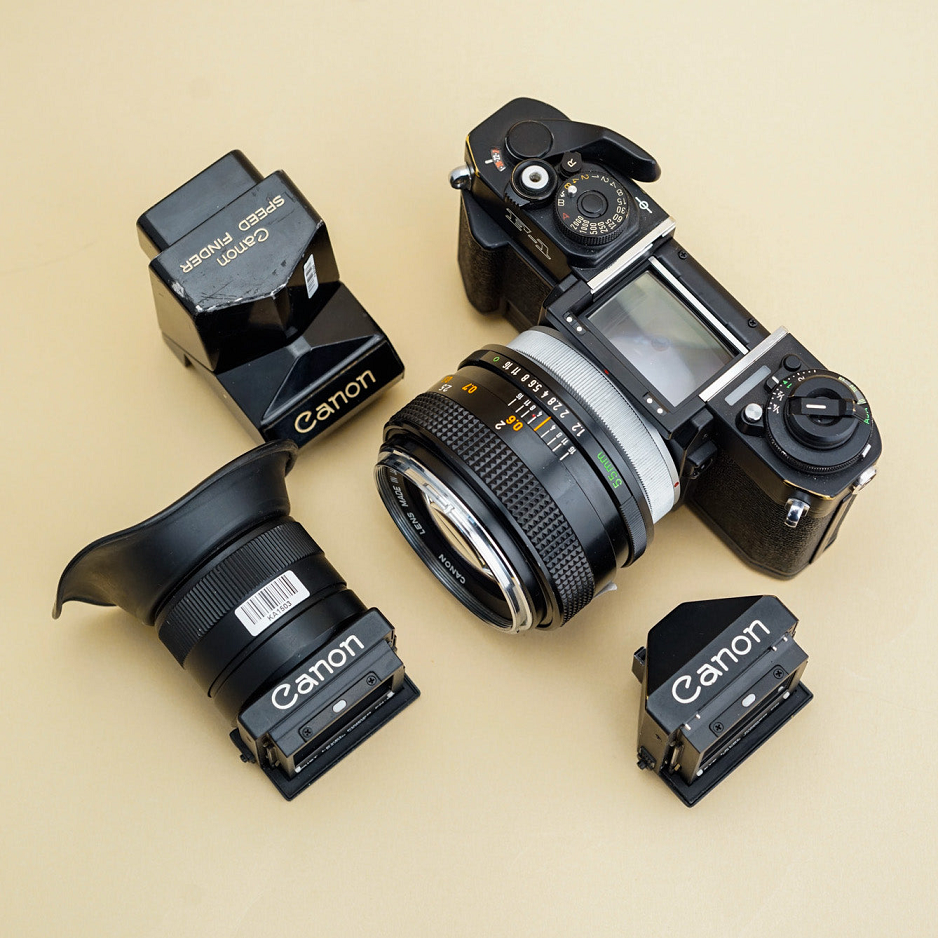In today’s digital age, film photography still holds a charm that digital photography struggles to replicate. Canon, a legendary name in the world of imaging, has established its credentials through an impressive range of film cameras. For many, Canon film cameras evoke a sense of nostalgia and passion that modern devices cannot match. In this article, we’ll explore the rich history, iconic models, key features, and practical tips for using and maintaining Canon film cameras. Whether you are a seasoned photographer or someone looking to venture into the world of film, this guide will serve as your comprehensive resource.
The Legacy of Canon Film Cameras
Early Beginnings
Canon’s journey in the film camera arena began in the 1930s with its debut model, the Kwanon. Though a prototype, it set the foundation for what the company would achieve. Canon, initially known as Seiki Kogaku Kenkyusho, released its first commercial camera, the Hansa Canon, in 1936. The Hansa Canon was a 35mm rangefinder camera that quickly gained popularity for its superior build quality and advanced features. It marked Canon’s entry point into the competitive world of film photography, setting a high standard for the company’s future endeavors.
Milestones in Innovation
Canon continued to innovate, releasing several groundbreaking models throughout the mid-20th century. The Canonflex, introduced in 1959, was Canon’s first single-lens reflex (SLR) camera. This model was a game-changer, offering interchangeable lenses and paving the way for future SLR innovations. Following this, the Canonet series launched in the 1960s, became an instant hit. These compact rangefinder cameras were user-friendly and affordable, making them accessible to amateur photographers.
The 1970s and 1980s were pivotal decades. In 1971, Canon released the F-1, a professional SLR camera that quickly became a favorite among photographers. Its modular design allowed for extensive customization, making it versatile and reliable. In 1976, Canon took another significant step by introducing the AE-1, the world’s first camera to feature a microprocessor. The AE-1 brought automated exposure control to the masses, setting new benchmarks in ease of use and functionality.
Transition to Digital
As digital photography began to rise in the late 1990s, Canon adapted by starting to produce digital cameras. However, this did not mean the end of its film cameras. The Canon EOS-1V, released in 2000, was the company’s last professional-grade film SLR. This model epitomized Canon’s technical prowess, featuring rapid autofocus, high-speed shooting, and robust build quality. Despite its shift towards digital, Canon’s film cameras remain beloved by many photographers for their craftsmanship and the unique qualities of film.
Iconic Canon Film Camera Models
Canon AE-1: A Game Changer
The Canon AE-1, launched in 1976, was a revolutionary camera in many respects. It was the first SLR to incorporate a microprocessor, automating exposure control and making the camera user-friendly. With over five million units sold, the AE-1 became one of the best-selling cameras of all time. Its compact and durable design, combined with a user-friendly interface, made it a favorite among both amateurs and professionals.
The AE-1 uses FD mount lenses, which are known for their optical excellence. The camera offers a range of shutter speeds from 1/1000 to 2 seconds and features a built-in light meter. This makes it extremely versatile, capable of capturing everything from fast action to low-light scenes. The AE-1’s enduring popularity is a testament to its groundbreaking design and reliable performance.
Canon F-1: The Professional’s Choice
The Canon F-1, released in 1971, was designed to meet the rigorous demands of professional photographers. Its modular system allowed for extensive customization, from interchangeable viewfinders to motor drives and focusing screens. Built with an all-metal construction, the F-1 was made to endure harsh environments and heavy use.
The F-1 features manual exposure control, with shutter speeds ranging from 1/2000 to 1 second. Its durability and versatility made it a staple among professionals, capable of handling diverse photographic challenges. The camera was also compatible with an extensive range of accessories, enhancing its functionality. The F-1’s robustness and reliability made it an enduring model in Canon’s lineup.
Canonet QL17 GIII: Compact Excellence
Introduced in 1972, the Canonet QL17 GIII is a compact rangefinder camera lauded for its fast f/1.7 lens. The QL17 GIII gained popularity among street photographers and travelers for its portability and excellent low-light performance. One of its standout features is the Quick Load (QL) system, which simplifies the film-loading process and minimizes the risk of film misloading.
The QL17 GIII offers shutter speeds from 1/500 to 1/4 seconds, with a bulb mode for long exposures. Its built-in light meter and aperture-priority mode make it easy for photographers to achieve correct exposure. Despite its small size, the camera delivers high-quality images and has earned a lasting reputation for its reliability and performance. The Canonet QL17 GIII remains a sought-after model among film photography enthusiasts.
Canon EOS-1V: The Pinnacle of Professional Film Cameras
The Canon EOS-1V, launched in 2000, represents the zenith of Canon’s film camera technology. It offers rapid autofocus, high-speed shooting up to 10 frames per second (with the PB-E2 power booster), and a durable, weather-sealed body. Aimed at professional photographers, the EOS-1V includes advanced features such as a sophisticated metering system and compatibility with Canon’s extensive range of EF lenses.
The camera’s performance and build quality make it ideal for demanding shooting conditions, from sports to wildlife photography. Its advanced autofocus system tracks moving subjects with precision, ensuring sharp images. The EOS-1V’s blend of speed, reliability, and image quality has made it a favorite among professionals. It remains a testament to Canon’s excellence in film camera manufacturing.
The Technical Brilliance of Canon Film Cameras
Lens Systems
Canon film cameras utilize a variety of lens mounts, each offering unique advantages. The FD mount, introduced in 1971, is known for its mechanical reliability and optical quality. It is used in many iconic models like the AE-1 and the F-1. FD lenses offer a range of focal lengths and aperture settings, catering to diverse photographic needs.
The EF mount, introduced with the EOS series in 1987, features electronic contacts for autofocus and aperture control. EF lenses are compatible with both film and digital EOS cameras, providing flexibility and convenience. The extensive range of EF lenses includes options from ultra-wide-angle to super-telephoto, making it a highly versatile system.
Canon’s earlier R and FL mounts, used in some of its rangefinder and SLR cameras, are less common today but still valued by collectors and enthusiasts. Understanding these lens systems helps photographers choose the right lenses for their Canon film cameras, enhancing their creative possibilities.
Film Types and Their Uses
Canon film cameras typically use 35mm film, the most popular format among both amateur and professional photographers. This format is versatile, offering a wide range of film choices, including color negative, color reversal (slide), and black and white films.
Color negative film, like Kodak Portra or FujiFilm Superia, produces prints and offers a broad dynamic range, forgiving exposure errors. It is ideal for everyday photography and portraiture. Color reversal film, such as FujiFilm Velvia or Kodak Ektachrome, produces positive images with vibrant colors and high contrast. It requires precise exposure but rewards with stunning visual quality, making it suitable for professional and landscape photography.
Black and white film, like Ilford HP5+ or Kodak Tri-X, offers excellent tonal range and artistic appeal. It is often used for fine art, documentary, and street photography. Different film types add unique qualities to images, allowing photographers to experiment and find what best suits their style.
Mastering Exposure and Metering
Achieving correct exposure is crucial for high-quality photographs. Canon film cameras offer various exposure modes and metering options to help photographers get the right settings.
Manual exposure control allows full customization, making it ideal for experienced photographers. Models like the Canon F-1 feature manual exposure, with settings for aperture, shutter speed, and ISO. Automatic exposure modes, found in cameras like the AE-1, simplify the process by adjusting settings based on the lighting conditions. Shutter-priority and aperture-priority modes offer a balance between manual and automatic control.
Built-in light meters, a common feature in Canon film cameras, provide exposure readings to guide photographers. Advanced models include multiple metering patterns, such as center-weighted, spot, and evaluative metering, catering to different shooting scenarios. Mastering these exposure and metering techniques ensures well-exposed images, enhancing overall photographic quality.
Getting Started with Canon Film Cameras
Basic Setup
Starting with a Canon film camera involves a few essential steps. Begin by loading the film. Open the camera’s back cover and insert the film canister. Pull the film leader across and attach it to the take-up spool. Close the back cover and advance the film until it reaches the first frame. Proper film loading is crucial and becomes easier with practice.
Next, set the camera’s ISO to match the film’s ISO rating. This setting adjusts the light meter’s sensitivity, ensuring accurate exposure readings. Use the viewfinder to compose your shot and focus on the subject. Manual focus cameras require turning the focusing ring, while autofocus models handle this automatically.
Adjust the aperture and shutter speed to achieve correct exposure. The built-in light meter helps guide these settings, displaying whether the image will be overexposed or underexposed. Once everything is set, press the shutter button to capture the photo. Advance the film to the next frame using the camera’s film advance lever or motor drive.
Rewinding the film is the final step. Once you’ve finished shooting a roll, rewind the film back into its canister using the camera’s rewind knob or motor drive. Open the back cover and remove the film canister for processing. Following these basic steps ensures a smooth start with your Canon film camera.
Practical Tips for Better Results
Improving your film photography skills involves practice, observation, and refinement. Here are some practical tips to help you capture better images:
- Understand Light: Lighting is crucial in photography. Pay attention to natural light and consider the time of day and weather conditions. Use reflectors or external lights to enhance your shots.
- Composition: Effective composition makes images compelling. Use techniques like the rule of thirds, leading lines, and symmetry to create balanced and engaging photographs.
- Experiment with Film: Different film types offer various characteristics. Experiment with color, black and white, and slide films to learn their unique qualities.
- Practice Manual Focus: If your camera uses manual focus, practice to achieve sharp and precise images. Focusing aids like split-image rangefinders can help.
- Keep a Photographic Journal: Note down settings, film type, and shooting conditions for each roll. Reviewing this information helps understand what worked and what didn’t, aiding improvement.
Incorporating these tips into your photography routine helps refine your skills and results in more impressive images. Consistent practice and willingness to experiment are key.
Exploring Creative Techniques
Exploring creative techniques can add depth and interest to your film photography. Double exposure, for example, involves exposing the same frame twice, creating layered and surreal images. This technique can produce dreamy effects and is achieved by not advancing the film after the first shot.
Long exposures capture motion and light trails, offering a sense of movement and drama. Use a tripod to keep the camera steady and experiment with different shutter speeds. Bokeh, the out-of-focus areas in an image, adds a pleasing blur. Achieve this effect using a fast lens with a wide aperture, focusing on a close subject while blurring the background.
Consider pinhole photography, which uses a camera with no lens, just a small hole to let light in. This method produces unique, soft-focus images. Infrared film captures light beyond the visible spectrum, creating otherworldly images. This film requires specific handling but offers stunning results.
Experimenting with these techniques can enhance your creativity and result in unique photographs. Don’t be afraid to try new ideas and push the boundaries of your skills.
Maintaining Your Canon Film Camera
Regular Maintenance
Maintaining your Canon film camera ensures its longevity and optimal performance. Clean your camera regularly to remove dust and dirt. Use a soft, lint-free cloth for the exterior and a dedicated lens cleaning solution for the lens. Avoid touching the lens or sensor with your fingers to prevent smudges.
Store your camera in a protective case when not in use. This practice prevents dust buildup and protects against physical damage. Keep it in a cool, dry place to avoid moisture and mold growth. Regular maintenance keeps your camera in top condition and ready for use.
Troubleshooting Common Issues
Even with proper care, you might encounter issues with your Canon film camera. Here are some common problems and troubleshooting tips:
- Light Leaks: Light leaks can occur if the camera seals are worn or damaged. Inspect the seals and replace if necessary. Covering the camera with a cloth during long exposures can help prevent leaks.
- Focus Problems: If your images are consistently out of focus, check the lens and focus mechanism. Clean the lens and ensure it is properly mounted. Persistent issues may require professional servicing.
- Film Advance Issues: If the film doesn’t advance smoothly, check for obstructions or damage in the film path. Clean the film chamber and ensure the film is loaded correctly. Persistent problems may indicate issues with the advance mechanism.
- Battery Problems: If your camera doesn’t power on or the light meter is unresponsive, check the battery. Replace it with a new one and ensure the battery contacts are clean.
- Mechanical Faults: If the shutter or other mechanical parts are not functioning correctly, professional servicing may be required. Take your camera to a reputable repair shop for diagnosis and repair.
Regularly inspecting your camera and addressing issues promptly ensures it remains functional and reliable. Proper care and maintenance keep your Canon film camera in excellent working condition.
Conclusion
Canon film cameras offer a blend of rich history, innovative technology, and exceptional image quality. From iconic models like the AE-1 and F-1 to compact favorites like the Canonet QL17 GIII, Canon’s film cameras have left a lasting impact on photography. Understanding the technical brilliance behind these cameras and mastering their use can significantly enhance your photographic journey.
Whether you are a professional photographer or an enthusiastic hobbyist, exploring the world of Canon film cameras offers a unique and rewarding experience. Proper maintenance and a willingness to experiment with different techniques will help you get the most out of your camera.
Rediscover the magic of film photography with Canon. Unleash your creativity, capture timeless images, and enjoy the tactile and visual pleasures that only film can provide. Dive into this timeless art form and let your Canon film camera be your guide.



